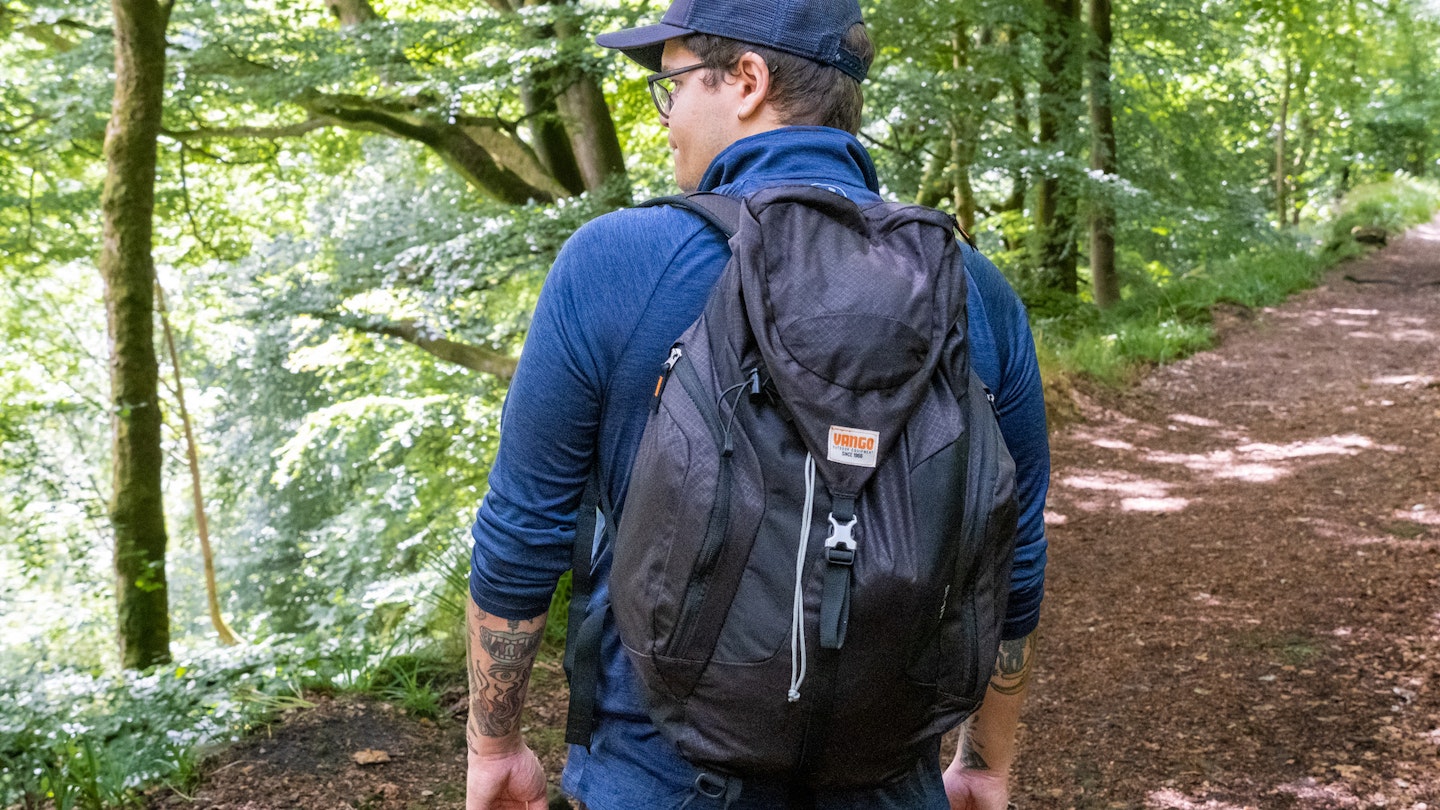Climate change is an unignorable fact. The behaviours of humanity over the past century have had a hugely detrimental effect on the planet. Though there’s little we can do about the past, we can make better choices moving forward. If you’re into outdoor pursuits, there’s a good chance that you do your part already – after all, why would you want to spoil nature’s playground? It's time for the Vango Trail 35 Earth Review.
Picking sustainable and recycled products is a sure-fire way to ensure that you’re doing your part, but it’s no secret that a clean conscience and reduced carbon footprint often come with a meaty price tag. So, what can you do if you’re looking to make good choices on a budget?
Well, one thing is to turn to the Vango Earth Collection, a range of outdoor gear that includes rucksacks, sleeping bags and tents, all made using recycled single-use plastics. Well-known for its family-accessible equipment, Scout gear and Duke of Edinburgh kit, the Scottish brand is bringing affordable and accessible sustainability to market. While this is worthy of celebration, it’s only a success if the products can deliver a performance which makes them a viable alternative to equipment made with virgin materials.
With this in mind, William Lobley took the chance to review the Vango Trial 35 Earth, a hiking daypack.
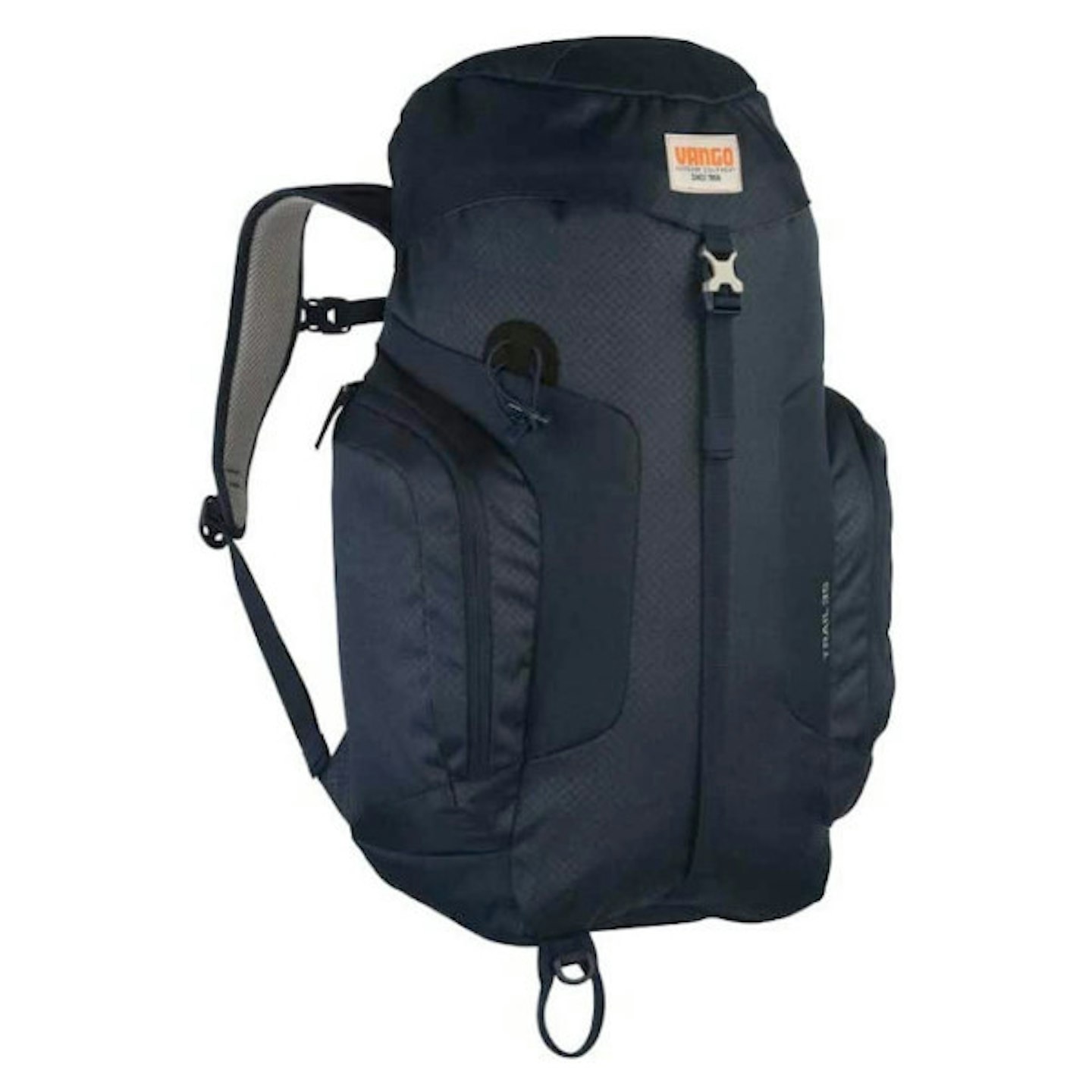
www.tiso.com
Materials and build
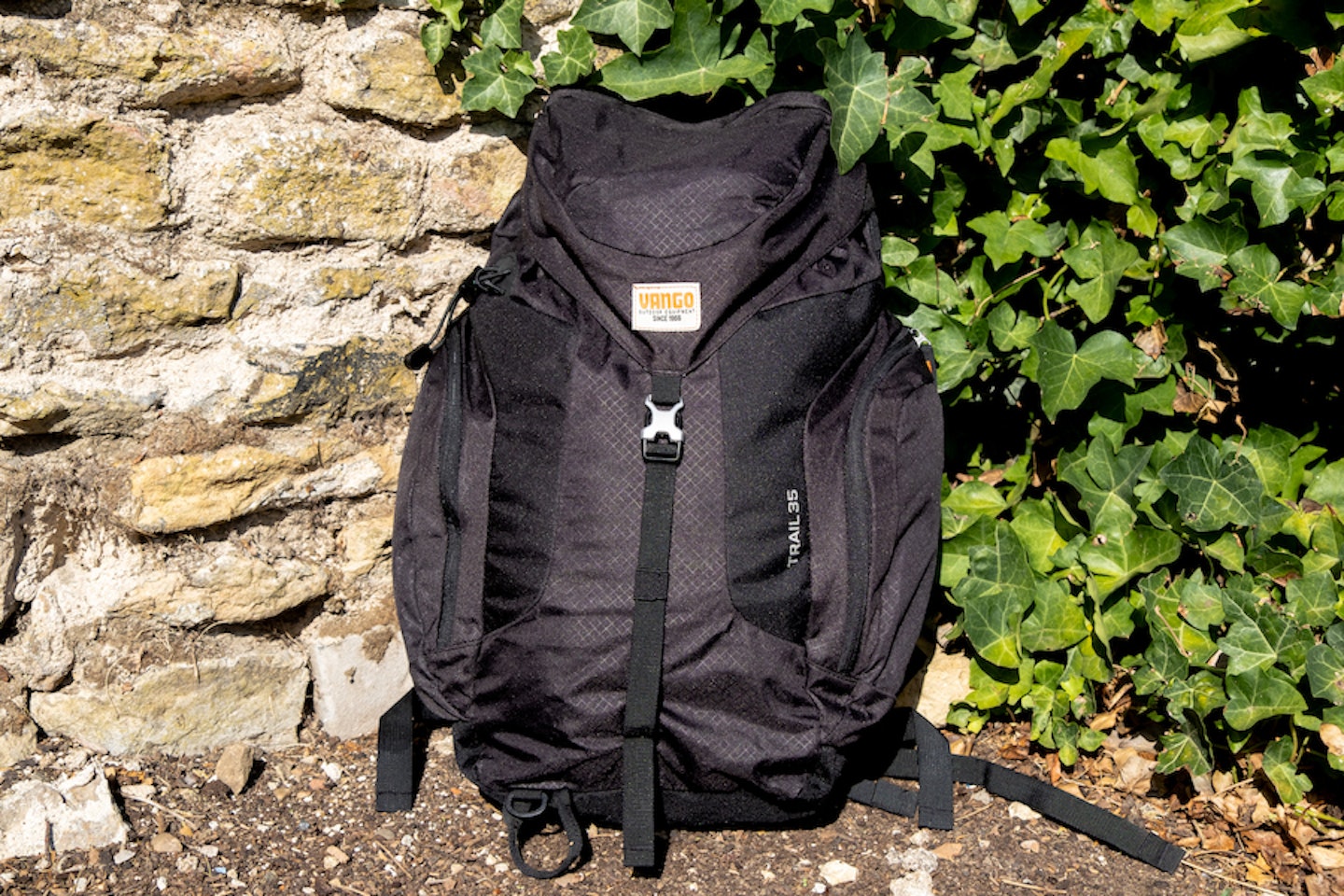
One of the best things about the Trial 35 is that it’s light, weighing in comfortably under 1kg. Part of this lightness is from Vango’s use of low-weight perforated foam in the straps and back risers of the pack. Not the most elegant of solutions but adept at keeping the price low, so it’s no shock that this material is found in use here. In practice, so long as the foam is well shaped and there's good harnessing, it’s usually comfortable enough for a beginner's budget-friendly pack.
A second contributing factor to Trial 35’s lightness is its fabric - the pack is constructed with a single wall of Vango Vintage Excel Eco Fabric, derived entirely from single-use PET plastics. There's a grid pattern - not unlike Ripstop - for extra protection against snags encountered in the wild.
When you’ve got it in your hand, it’s clear that this pack isn’t going to be robust enough for regularly scrambling and scraping rocks, but for light and general walking purposes in open fields and along forest tracks, there’s nothing to worry about (so long as you don’t pack anything spiky, that is).
The pack has a simple layout, which I like. It has one large compartment with a pull-cord topper – over the top of this, you can clip down the lid, which has one zip pocket on its top and a security pocket on its inner, accessible only when the bag is open. On the side of the pack, there are two zippered side pockets, ideal for water bottles or other essentials. In other words, it's a straightforward daypack layout.
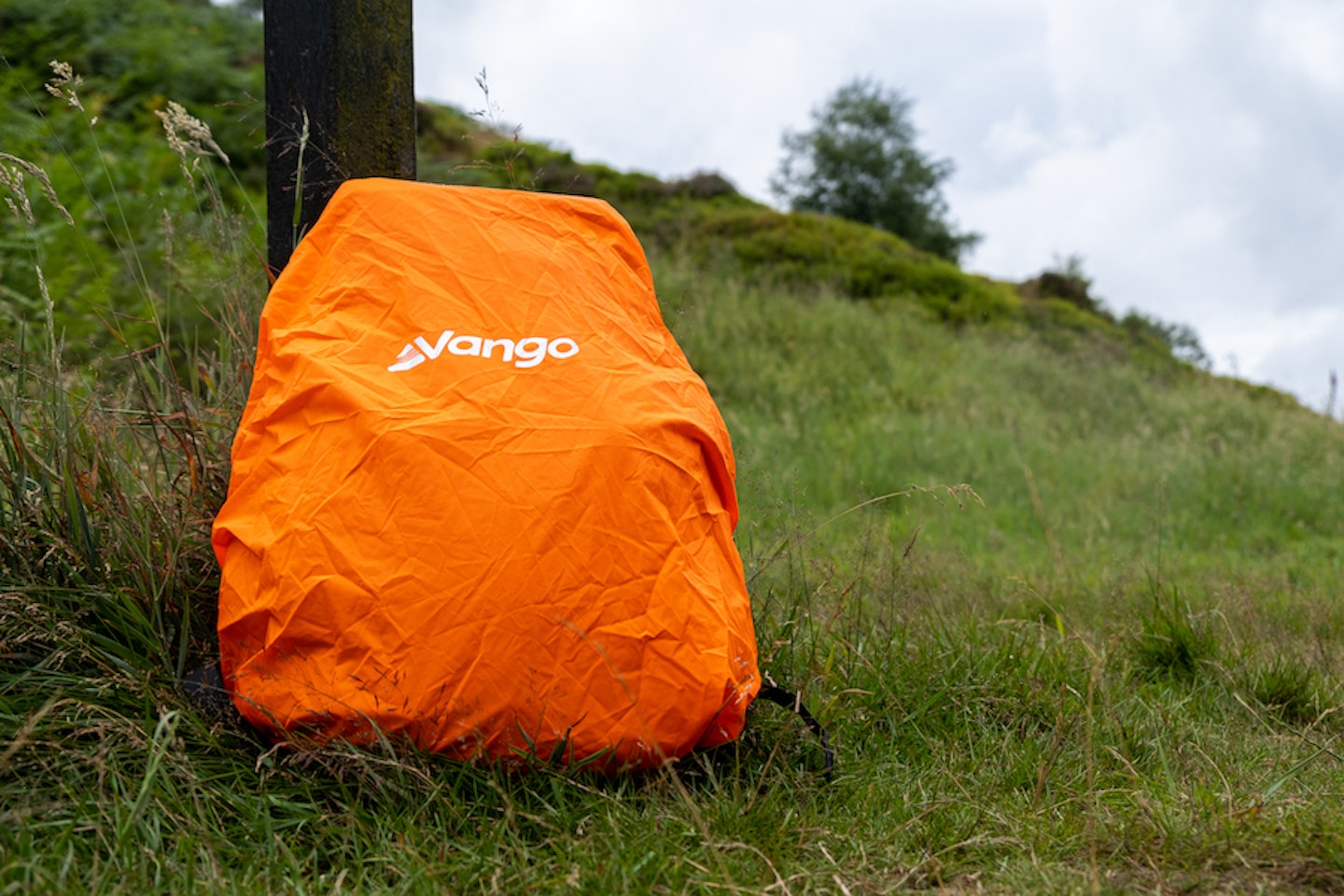
The straps are shaped to sit comfortably on the contours of the upper body, with a sternum strap for added stability and a secure fit (though note, I am board). The strap moves on a taught fabric runner, which might not be the most durable option, but it’s a decent effort for this price range, and it works well.
The face of the pack has two loops - one elasticated - for holding walking poles. Waterproofing comes courtesy of the hi-vis detachable rain cover, stored in a stow pocket on the rear of the pack.
Out in the field
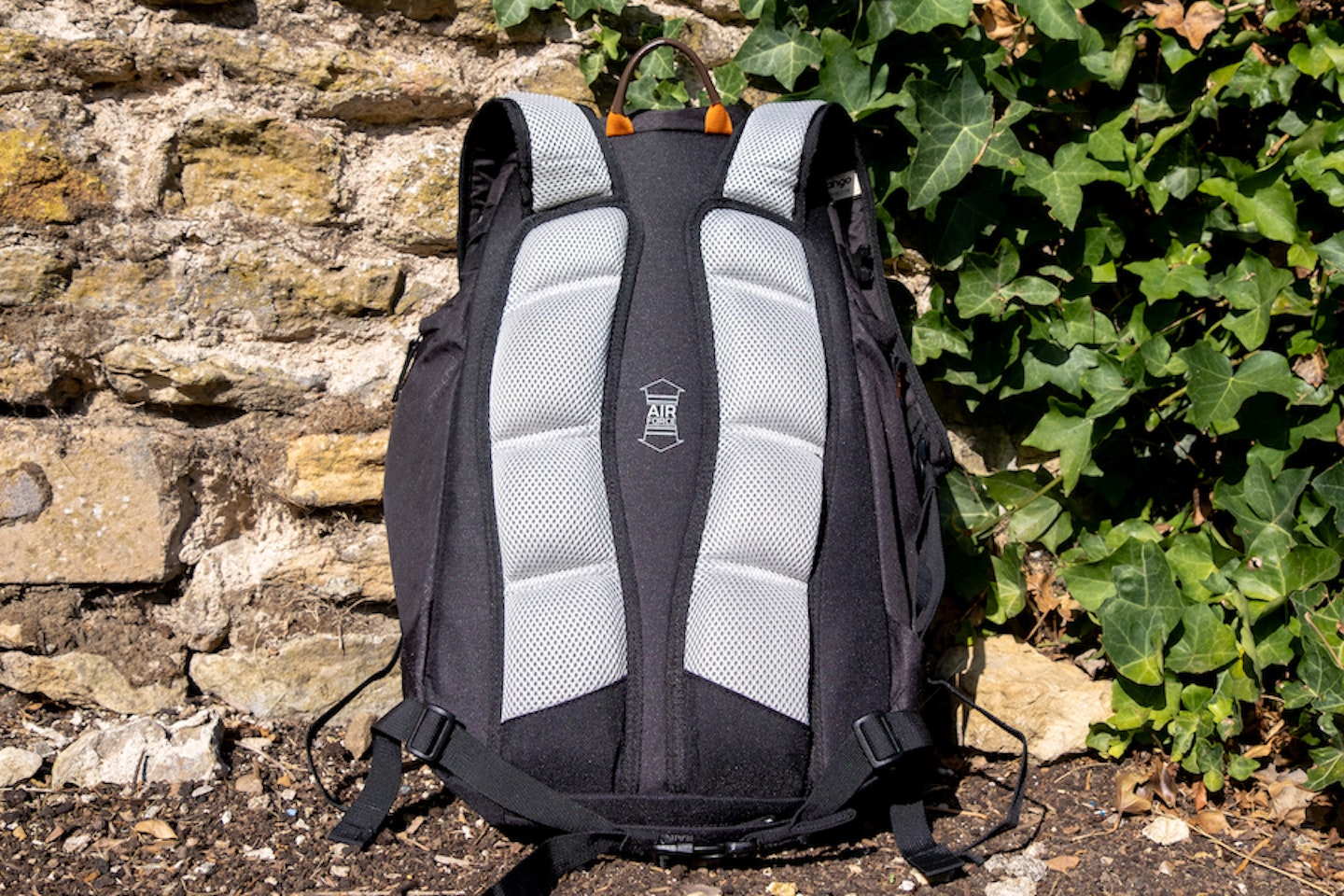
Though I used the Trial 35 backpack for daily commutes and shorter walks, where it performed well, the most thorough test for the Vango Trial 35 came when I embarked on a 17-mile hike. A reasonable distance, this walk was during 2022’s first heatwave, with temperatures knocking on the door of 36° Celsius. Going solo, I carried all the kit I would need for the day, including a two-litre bladder and two one-litre bottles of water, food, a camera and a zoom lens. I also packed a light change of clothes to allow me to step into polite society at my destination (read: the pub).
Full but not jammed, the Trail 35 was comfortable on the back, with contents providing a feeling of rigidity and shape. The foam-stuffed risers on the back were comfortable and reassuring, providing two long points of contact on my back which, along with well-adjusted straps, had the pack sitting securely when moving. While I was initially happy with the airflow, after three or four miles I could already feel a considerable sweat build up under these points, which quickly spread across the rear of my t-shirt (cotton, a poor choice on my part).
The secure position meant that this dampness never gave way to chaffing but compared with webbed airflow systems as you’ll find on Osprey packs, these bars are a bit dud. Plus, the foam used to stuff these risers and the shoulder straps are non-absorbent. I understand that this is sensible – who wants a bag getting saturated with rainwater and sweat? But this does mean your sweat just kind of… sits there, once your top is saturated. It’s an unpleasant thought, but for shorter hikes on days that aren’t among the hottest of the year, I can see this being less of an issue.
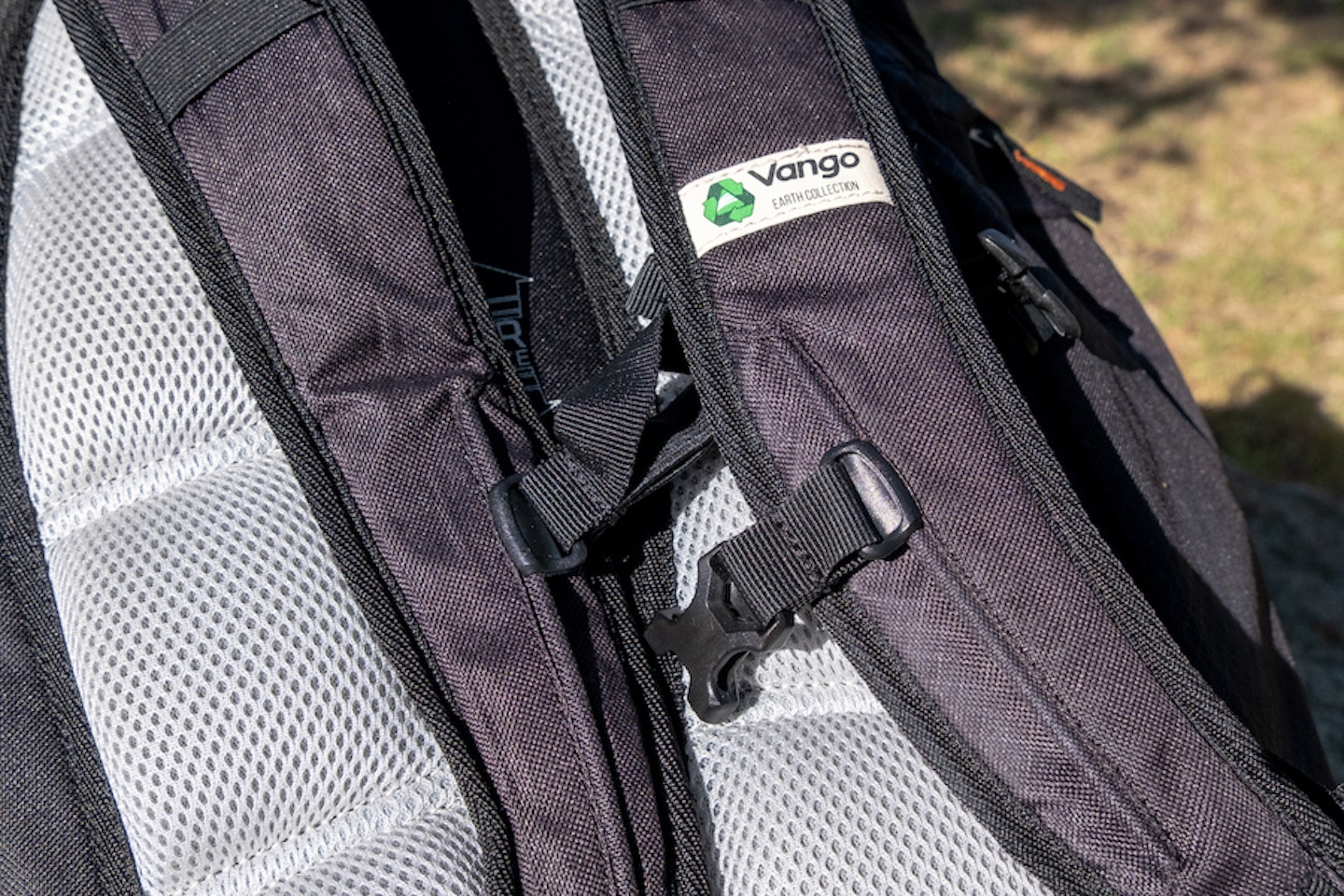
Bodily temperature regulation functions aside, the general use of the bag throughout the hike was spot on. The shoulder straps were well positioned and shaped for my shoulders, with the sternum strap helping maintain pack balance. Around mile 15, I was starting to long for a waist strap to take a little of the pressure from my shoulders but managing over 10 miles without one and suffering no issue will be more than enough for many.
The main compartment held all I needed with ease, the side pockets helping me compartmentalise my packing, keeping snacks and sun-beating essentials like sun cream and sunglasses organised. The top lid pocket of the bag gave me a nice place to keep my phone and hand sanitiser, while the inner security pocket was ideal for dropping a Tile tracker, and ensuring my keys and wallet weren’t accidentally left behind anywhere.
Any downsides?
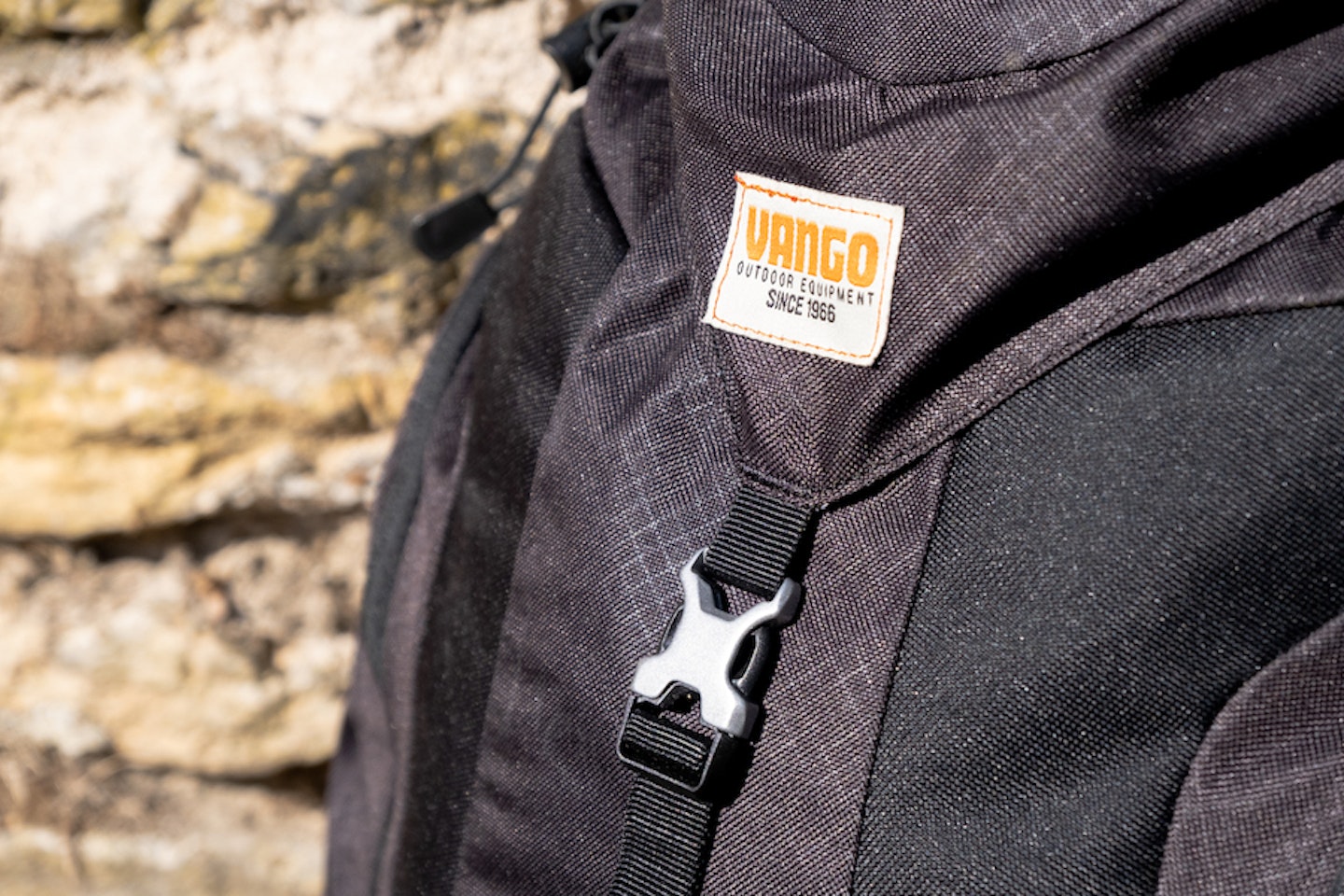
When considering the price of the Trail 35, I don’t mind that the pack gets a bit sweaty on longer hikes. It’s a compromise that I would be willing to make if I were on a budget and the only other option was purchasing a ventilated pack twice its price.
The one area of concern I do have is its robustness and durability. I worry that the lightweight single-layer construction means that the bag will be knackered in under two years. To me, making a durable product is a key part of developing a sustainable product. Those who only need a pack once or twice a year will be fine, but I worry that the bag will not make it very long if someone does get the bug for hiking and hammers it hard.
Having said this, if there’s a choice between buying a non-sustainable rucksack and the Trial 35, opt for this one. Most budget packs suffer similar question marks over their durability.
Price and competition
The Vango Trail 35 Earth has an RRP of £52, but it can easily be found for around £35 at Amazon and Cotswold Outdoor. This is very affordable and lands the bag right in amongst budget competition, including Regatta, Highlander and those from outdoor retail brands, like Mountain Warehouse. If it were my money on the line, I would have a Vango offering high on my list, with the sustainability credentials knocking it over into certainty.
For a notable boost in features, build quality, and ventilation, you’re going to need to spend upwards of £70 for (excellent) offerings from Osprey and Mammut.
Verdict
The Vango Trail 35 is an imperfect solution to a problem that has no perfect answer. Sustainability is an essential consideration when purchasing new outdoor equipment, so opting for the Vango over its virgin-material competition is a solid decision. While the pack may not last you years into the future, what you do get is a well-designed, spacious pack that is comfortable enough over short-to-medium distances. If you’re hiking on a budget or are a newcomer looking to test the waters of walking, then this is a good starting point.

www.tiso.com
Pros:
Uses sustainable material
Simple and spacious
Dedicated rain cover
Cons:
Questions over long-term durability
Poor ventilation
Specifications:
Size: 35L
Weight: 0.9kg (approx.)
Compartments: One
Pockets: Two zippered outers, one zippered outer lid, and one zippered inner lid
Other: Sternum strap
Other items to consider:
B07GH7NGJM
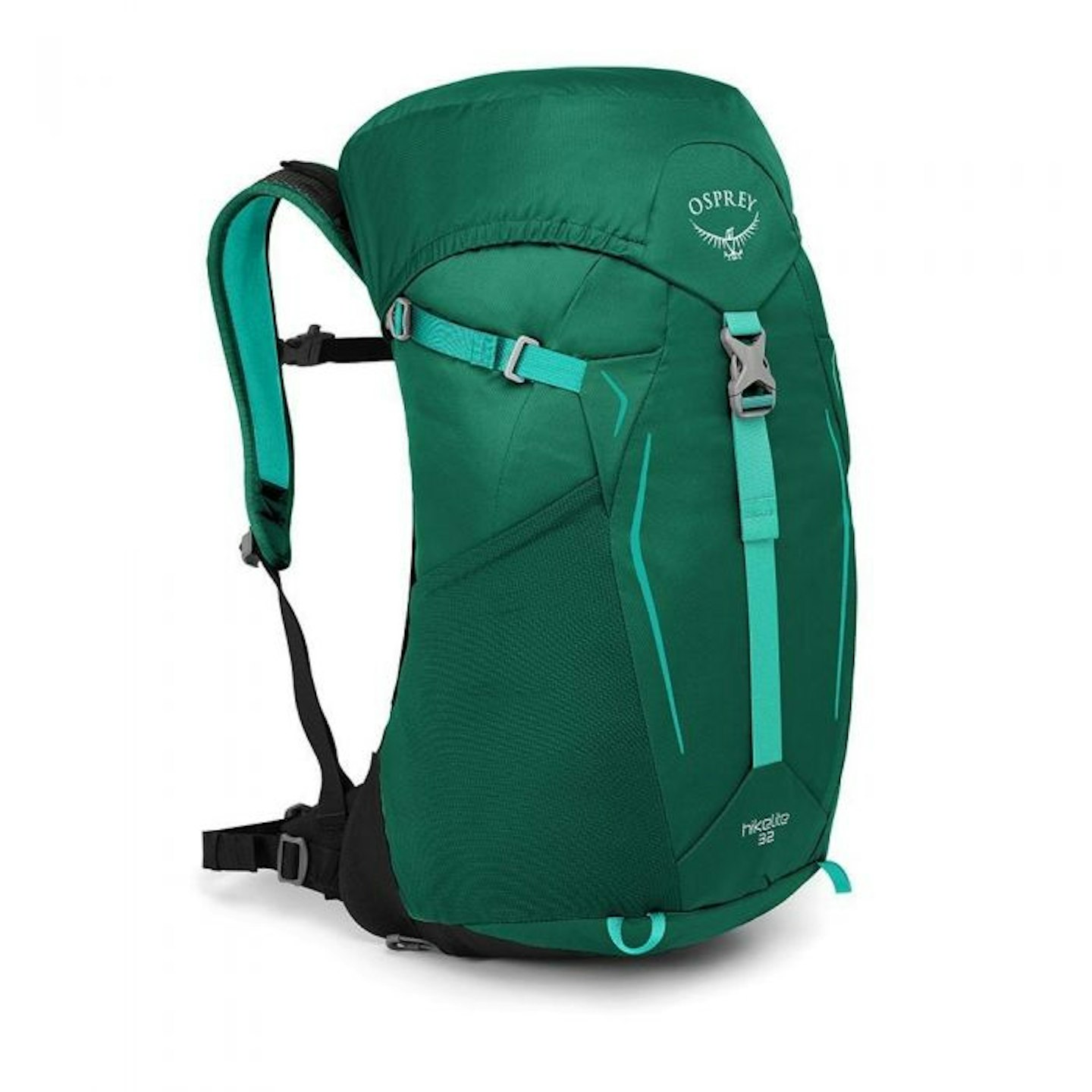
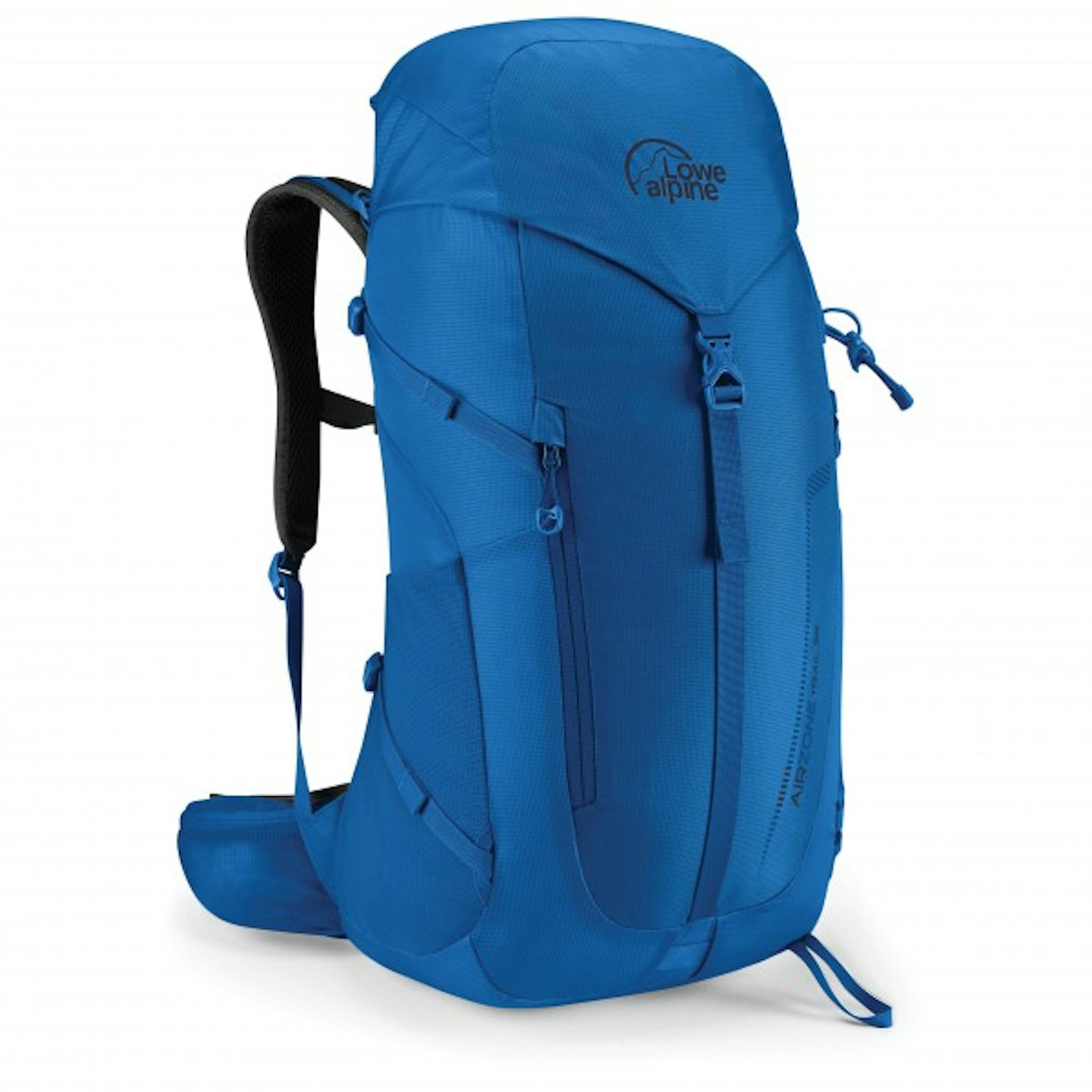
www.alpinetrek.co.uk
How the product was tested:
I used the Vango for three months as a general-purpose pack and during hikes ranging from three to 17 miles. I used the backpack during heatwaves and downpours in the flat planes of The Fens and the green valleys of West Yorkshire.
